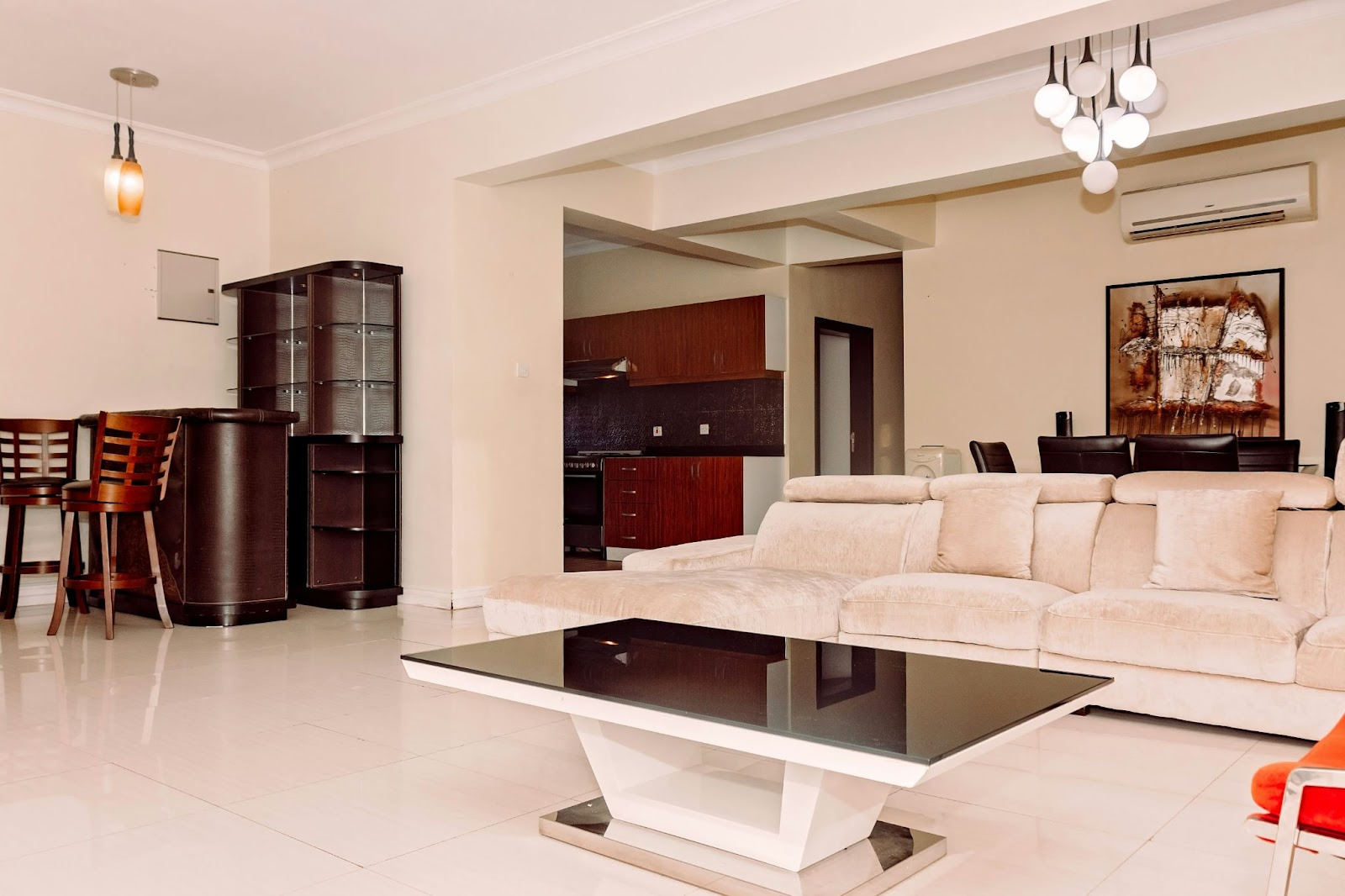Affordable Housing Alternatives: Why Barndominiums Are Gaining Popularity
.jpg)
Housing affordability challenges are driving innovative solutions as traditional home prices continue outpacing income growth.
Creative alternatives once considered unconventional are entering mainstream consciousness as practical, desirable options. Among these emerging trends, barndominiums represent one of the most compelling combinations of affordability, functionality, and lifestyle appeal.
Understanding the Housing Affordability Crisis
Traditional housing markets in Australia and globally face unprecedented affordability challenges. Median home prices in major cities have reached levels requiring dual incomes and substantial deposits beyond many families' reach.
This crisis forces prospective homeowners to reconsider assumptions about what constitutes suitable housing.
Construction costs for conventional homes continue escalating due to material prices, labor shortages, and increasingly complex building codes.
The per-square-meter cost of traditional residential construction often exceeds $2,500-$3,500 in many regions. These expenses place quality housing beyond financial reach for significant portions of the population.
Land prices in desirable areas compound construction cost challenges, making traditional suburban homeownership increasingly unattainable.
Young families face choices between compromising on location, accepting smaller spaces, or delaying homeownership indefinitely. These pressures create demand for alternative housing solutions delivering value without sacrificing quality or livability.
What Are Barndominiums?
Barndominiums combine barn-style structures with residential living spaces, creating unique hybrid buildings.
These structures typically feature metal exteriors, open floor plans, and combined living-working spaces under single roofs. The term itself merges "barn" and "condominium," reflecting the blend of agricultural aesthetics with modern residential comfort.
Originally popular in rural American states, barndominiums have gained traction worldwide as affordable housing alternatives.
What began as converted agricultural buildings has evolved into purpose-built residential structures incorporating barn-style design elements. Modern barndominiums range from basic conversions to sophisticated custom homes rivaling traditional construction in comfort and amenity.
The versatility of barndominium designs accommodates diverse lifestyle needs from simple weekend retreats to permanent family residences. Some incorporate workshops, studios, or storage areas alongside living quarters, maximizing functionality. This flexibility appeals to homeowners seeking personalized spaces supporting both residential and vocational activities.
Cost Advantages Over Traditional Homes

Construction costs for barndominiums typically run 30-50% below comparable traditional homes. Simplified structural systems, efficient material usage, and faster construction timelines all contribute to substantial savings. These cost advantages make homeownership accessible to buyers previously priced out of conventional housing markets.
Metal building systems used in many barndominiums cost significantly less than traditional framing, foundation, and roofing assemblies.
Pre-engineered building components arrive ready for quick assembly, reducing labor hours and associated costs. The efficiency of metal building construction translates directly into lower prices for finished structures.
Foundation requirements often prove less extensive for lighter metal building structures compared to traditional masonry or timber construction.
Simpler foundations reduce both material costs and construction time without compromising structural adequacy. These savings add thousands to tens of thousands of dollars, depending on building size and soil conditions.
Open floor plans characteristic of barndominiums require fewer interior walls, doors, and associated finish materials. This architectural efficiency reduces material quantities while creating spacious, flexible interiors.
The same square footage delivered in open barn-style layouts costs less to build than traditionally compartmentalized floor plans.
Design and Customization Flexibility
Modern barndominium designs accommodate virtually any aesthetic preference from rustic farmhouse to contemporary industrial.
Interior finishes, fixtures, and details transform basic barn structures into sophisticated living spaces reflecting personal style. This design flexibility allows homeowners to create unique spaces impossible in cookie-cutter production housing.
Open layouts provide blank canvases for creative space planning without structural wall constraints. Living areas, kitchens, and bedrooms can be arranged according to lifestyle priorities rather than predetermined layouts.
This freedom enables truly personalized homes optimized for how families actually live rather than conforming to standard templates.
High ceilings characteristic of barn structures create dramatic interior volumes impossible in conventional residential construction. These soaring spaces accommodate lofts, mezzanines, and vertical design elements, adding visual interest and functional space. The vertical dimension becomes a design asset rather than wasted space above standard ceiling heights.
Incorporating residential and functional spaces under a single roof serves diverse lifestyle needs efficiently. Home workshops, art studios, vehicle storage, or home businesses integrate seamlessly with living areas. This multi-functionality particularly appeals to hobbyists, artists, and entrepreneurs wanting live-work arrangements.
Construction Timeline Benefits
Barndominiums typically reach completion in 3-6 months compared to 8-12 months for traditional home construction. Pre-engineered building systems arrive ready for assembly, dramatically accelerating structural phases. Faster completion means earlier occupancy, reduced financing costs, and quicker realization of homeownership dreams.
Weather-resistant metal exteriors allow interior finishing work to proceed regardless of conditions once shells are enclosed. This all-weather construction capability prevents the weather delays that commonly extend traditional building timelines. Consistent progress maintains momentum and prevents the frustration of stalled projects.
Simplified building systems require less specialized labor, potentially easing contractor scheduling challenges. Fewer trades involved in core construction reduces coordination complexity and scheduling conflicts. Streamlined construction processes benefit both builders and homeowners through improved efficiency and predictability.
Energy Efficiency Potential
Modern insulation techniques transform metal buildings into energy-efficient structures rivaling or exceeding traditional construction performance. Spray foam insulation creates seamless thermal envelopes, eliminating the gaps common in batt-insulated conventional walls. Properly insulated barndominiums achieve low heating and cooling costs despite metal exteriors.
Reflective metal roofing reduces solar heat gain substantially compared to traditional shingles. This characteristic proves particularly valuable in warm climates where cooling costs dominate energy expenses. Light-colored metal roofs can reduce cooling loads by 20-40% compared to dark asphalt shingles.
Open floor plans facilitate efficient air circulation and temperature distribution throughout living spaces. Single large volumes heat and cool more efficiently than multiple compartmentalized rooms, requiring balanced airflow. This thermal efficiency contributes to lower operating costs throughout building lifespans.
Strategic window placement in unobstructed wall spans optimizes natural lighting and passive solar heating. Without conventional room divisions limiting window locations, designers can position glazing for maximum benefit. Reduced artificial lighting requirements and solar heat gain both contribute to energy efficiency.
Maintenance Advantages
Metal exterior cladding requires minimal maintenance compared to traditional siding materials. No painting, staining, or periodic refinishing burdens homeowners with ongoing expenses and labor. Occasional washing maintains appearance while weather-resistant finishes last decades without deterioration.
Durable materials throughout barndominium construction reduce repair frequencies and lifecycle costs. Metal roofing lasts 40-70 years compared to 15-25 years for conventional shingles. Foundation simplicity and structural robustness minimize structural maintenance throughout building lifespans.
Pest resistance of steel framing eliminates termite concerns plaguing traditional timber construction.
No wood components mean no termite treatments, inspections, or damage repairs. This advantage proves particularly valuable in regions where termites present ongoing threats to conventional homes.
Fire resistance of metal construction provides safety advantages while reducing insurance costs. Non-combustible exteriors and structural frames perform far better in fire situations than timber construction. Many insurers offer premium reductions recognizing the superior fire performance of metal building systems.
Lifestyle and Space Benefits

Generous square footage at affordable prices allows families to enjoy spacious living without financial strain. Barndominium buyers often afford 30-50% more space than traditional home budgets would permit. This space advantage accommodates growing families, hobbies, and lifestyle activities, enhancing daily quality of life.
Combined living and functional spaces support modern work-from-home realities seamlessly. Dedicated home offices, workshops, or studios integrate naturally into barndominium layouts. This integration proves increasingly valuable as remote work becomes permanent for many professionals.
High ceilings and open layouts create psychological benefits through spacious, unconfined environments. The sense of openness and freedom these spaces provide contrasts sharply with the compartmentalized conventional homes. Many homeowners report improved well-being and reduced stress in open, airy barndominium interiors.
Rural and acreage settings suit barndominium aesthetics while offering lifestyle advantages. Country living, hobby farming, and outdoor recreation opportunities complement barndominium ownership naturally. These structures fit rural contexts both visually and functionally better than suburban-style homes.
Financing Considerations
Traditional mortgage lenders increasingly recognize barndominiums as legitimate residential properties qualifying for conventional financing. Initial skepticism has given way to acceptance as these structures prove their durability and value retention. Buyers now access standard home loans rather than requiring commercial or construction-only financing.
Appraisal challenges have diminished as more barndominiums establish comparable sales data in various markets. Early adopters sometimes struggled with valuations due to limited comparables. Growing popularity creates sufficient market data supporting accurate appraisals and appropriate loan amounts.
Lower purchase prices relative to traditional homes mean smaller mortgages and reduced monthly payments. This affordability advantage extends throughout ownership, freeing income for other priorities. The financial breathing room barndominiums provide enhances overall quality of life beyond housing considerations alone.
Construction-to-permanent loans streamline financing for buyers building barndominiums from scratch. Single loan applications and closings simplify processes compared to separate construction and permanent financing. This convenience removes obstacles that might otherwise deter prospective builders.
Zoning and Regulatory Considerations
Zoning regulations vary significantly regarding barndominium permissibility in different jurisdictions. Some areas welcome these structures while others restrict or prohibit them through agricultural or residential zoning limitations. Researching local regulations thoroughly before purchasing land prevents costly surprises and disappointments.
Rural and agricultural zones typically accommodate barndominiums most readily. These areas often permit agricultural buildings that can include residential components.
Urban and suburban jurisdictions may impose stricter limitations on barn-style residential structures.
Building code compliance ensures barndominiums meet safety and habitability standards. Modern construction techniques and materials allow these structures to satisfy all residential building codes. Working with experienced designers and builders familiar with code requirements prevents approval delays.
Homeowner association restrictions may limit or prohibit barndominiums in some planned communities. Reviewing all applicable covenants and restrictions before committing to barndominium construction prevents conflicts. Some buyers specifically seek unrestricted properties to avoid aesthetic limitations.
Resale Value and Market Acceptance

Growing market acceptance suggests barndominiums will maintain value comparably to traditional homes. As these structures become more common, buyer pools expand beyond early adopters. Mainstream acceptance transforms barndominiums from niche alternatives into recognized housing options.
Quality construction and attractive interiors create barndominium properties that appeal to broad buyer demographics. Well-executed examples rival traditional homes in market appeal and command appropriate prices. The key lies in professional execution rather than makeshift or obviously economized construction.
Unique character and space advantages can actually command premiums in some markets. Buyers seeking distinctive properties often prefer barndominiums over generic production housing. This niche appeal provides marketing advantages when selling to appropriate buyer segments.
Location remains the primary value determinant for barndominiums, as with all real estate. Properties in desirable areas with good land parcels maintain value regardless of the structure style. The barndominium itself becomes one feature among many influencing overall property appeal.
Conclusion
Barndominiums represent practical solutions to housing affordability challenges affecting millions of families.
Combining substantial cost savings with design flexibility and lifestyle advantages, these structures deliver genuine value. As awareness grows and market acceptance expands, barndominiums transition from alternative housing to a mainstream option.
The affordability crisis driving barndominium popularity shows no signs of abating soon. Traditional housing construction costs continue rising while income growth lags.
In this environment, creative alternatives like barndominiums provide pathways to homeownership that might otherwise remain closed to many families hoping to achieve housing security and build equity through property ownership.
(1).jpg)
.jpg)
